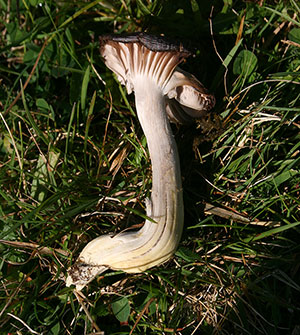
Yellow Foot Waxcap © Maurits Fontein
Dorset Wildlife Trust (DWT) is delighted to announce the discovery of a waxcap fungi which is new to the Kingcombe Meadows Nature Reserve in West Dorset.
The discovery of the yellow foot waxcap takes the amount of waxcap fungi species in the area up to a staggering 25. Other waxcaps found include the crimson waxcap, the parrot waxcap and the splendid waxcap, to name a few.
The Kingcombe Meadows Nature Reserve has unique unimproved grassland, which is grazed by cattle and sheep, and creates a very specific set of conditions that waxcap fungi need to thrive.
Bryan Edwards, from Dorset Environment Records Centre (DERC) said, “Kingcombe Meadows Nature Reserve is rightly renowned for its flower-rich meadows, but in the autumn the orchids, rattle, knapweed and scabious are replaced by colourful waxcap fungi, with shades of red, orange, yellow, green and even pink. This autumns’ damp and mild weather has been ideal for fruiting. The reserve supports 25 species making it one of the richest sites in England for these species. The 25th, Hygrocybe flavipes yellow foot waxcap was added this year and is only known from a handful of sites in the county. Waxcaps require well-drained soils low in nutrients and also depend on Dorset Wildlife Trust’s cattle and sheep to maintain a short sward.”
DWT’s West Dorset Land Management Officer, Maurits Fontein, said “This is such a rare and special discovery for Kingcombe, and I was pleased to be there when we found the yellow foot waxcap, which has never been found at Kingcombe before. It’s great that we’re still finding new species of waxcap at Kingcombe and having such a high number of them on one site is very exciting.”
Waxcaps are a type of fungi, which vary in colour and size. Due to their importance and rarity, DWT recommends that they are not removed from the site or eaten.
For more information about the Kingcombe Meadows Nature Reserve, and the courses run at the Kingcombe Centre, including creative courses for December, visit www.kingcombe.org or phone 01300 320684.







